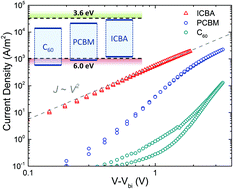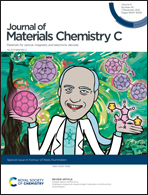Electron and hole transport in solution-processed fullerenes
Abstract
Methanofullerene [6,6]-phenyl C61-butyric acid methyl ester ([60]PCBM) and its derivatives, developed by Hummelen and coworkers, have been the workhorse acceptors in organic bulk heterojunction solar cells for more than two decades. Here, an overview of their charge transport properties is given. [60]PCBM exhibits excellent electron-transporting properties, with a mobility in the 10−3 cm2 V−1 s−1 region. For enhancement of the open-circuit voltage, higher adduct fullerene derivatives have been subsequently developed. The electron currents of these bisadducts are all lower compared to that of [60]PCBM, whereas for tris[60]PCBM the electron current is even decreased by 3 orders of magnitude, due to the presence of a higher multitude of isomers. Although fullerenes have shown ambipolar transport in transistors, their hole conducting ability could not be confirmed in diodes due to the lack of suitable hole injecting electrodes. Using Ohmic contacts via a recently developed interlayer technology, trap-free space-charge-limited hole and electron currents were measured in a bisadduct fullerene, with a hole mobility equivalent to the electron mobility. Hole trapping by water clusters sets in for fullerenes with an ionization potential larger than 6.0 eV.

- This article is part of the themed collection: Special issue in honour of Kees Hummelen

 Please wait while we load your content...
Please wait while we load your content...